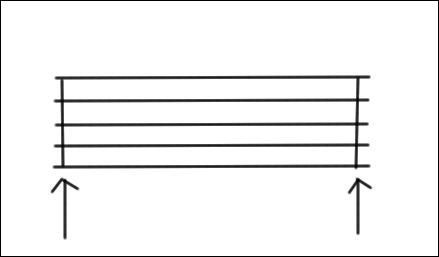All non-alcoholic!
Welcome back This week’s theme is Metre.
It’s another of those words that has more than one definition. We know a metre as the metric unit of length. This is a different concept, and yet… measuring out the music is exactly what we are doing.
The regular ongoing pulse of a piece of music is divided into short equal segments of (usually) 2, 3 or 4 beats.
We count out the beats and 1 is stronger, so that you can hear the metre.
1 2 3 4 1 2 3 4 1 2 3 4 1 2 3 4
1 2 3 1 2 3 1 2 3 1 2 3 1 2 3
1 2 1 2 1 2 1 2 1 2 1 2 1 2 1 2
Each group of beats is called a bar. Each bar consists of a certain number of beats, usually 2, 3 or 4. Four is BY FAR the most common.
These are the lego blocks a song is built with. They all join up together and there are no gaps. The bumps are all evenly spaced, but a wall built with six-bump bricks will have a different look and feel from a wall built out of eight-bump bricks.
Try listening to, or singing, these tunes and working out whether they are in 3- or 4-time:
She’ll be coming round the mountain, Baa Baa Black Sheep, Happy Birthday, Verdi’s La donna è mobile, Oh my darling Clementine – anything you like, really.
Because it’s hard to count and sing, use your left hand to tap where you think the strong beat is and the right hand for the other beats.
Being able to feel the beat, and the metre (whether it’s 4, 2 or 3 or 1anda2anda) comes with practice. If you can feel where the strong beat is at the beginning of the bar it helps you to stay with the other musicians and find your way back in when you get lost.
Singers and musicians who don’t read music need to know what a bar is because it is how we measure the music. You don’t say, “Come in when I’ve played this intro for 14.2 seconds”, you say, “Come in after 8 bars”.
NB: If you are American (it’s all right, you can’t help it), you will find the word “measure” used instead of bar, and bar-lines may be referred to as “bars”.
What to look for on the page
This is what a musical bar looks like:

It is the space in between the two lines. These are the bar-lines.
American terms: Measure instead of Bar, and (confusingly) Bar instead of Bar-line.
You will see the bars are like little bricks building the music.

Here’s a set of four bars – a lot of songs and pieces are built out of four-bar sections.
In written music you will sometimes see little numbers written above the stave at the beginning of each line – these are the bar numbers. They can be very useful for knowing where you are (particularly in those songs where you sing the same words a lot and it’s very hard to know which “Put a little love” you’re supposed to start at this time.
One more thing: Each bar has the same number of beats and the tempo keeps going. So every bar lasts the same amount of time. In written music, how long a bar is on the page will depend on how many notes there are in it, and on the lyrics, if it’s a song.
Here’s an example from a real score. Notice the bar number (17) at the beginning of the line. Try singing the line to get a feel for it. Can you tap out the pulse while you do this?
Bar 20 is much smaller than the others, but that’s because it has one word, one long note, filling the whole bar. It lasts for the same four beats as the other bars.
Got it?
I hope this makes sense. Get in touch if you have any questions or comments.
There will be more on time, next time.
Vocab of the week:
Metre
Bar – it’s really important to understand this basic unit of music
Bar-line
Two, three or four beats in a bar
Sidebar for poetry nerds
If you’ve studied poetry you may know metre as the difference between the sound of
“Do you remember an inn, Miranda, Do you remember an inn?” and
“I wandered lonely as a cloud, That floats on high o’er vales and hills” or
“Dirty British coaster with a salt-caked smokestack”
In musical terms this is a rhythm. The metre is the underlying strong beat – all of these work on a 4-beat pattern, with the second strong beat coming on “Do,” “floats”, and “salt”.

